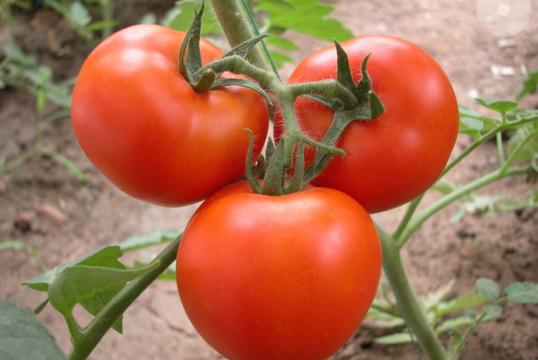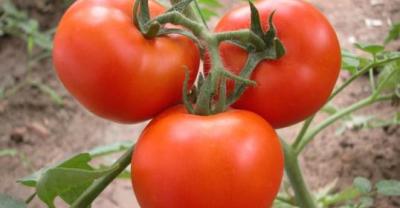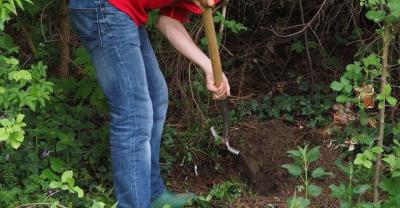Planting technique of Cuihong Tomato in greenhouse
First, sowing and raising seedlings
1. Sowing time: it is suitable to sow seeds in winter and spring in Qujiang greenhouse from mid-September to early October, and harvest can be started in early February of the following year, ending at the beginning of June, and the harvest period is nearly 4 months.

2. Sowing: the seeds of tomatoes should be disinfected before sowing to prevent the seeds from carrying bacteria. You can wrap the seeds in gauze, soak the seeds in 55 ℃ warm water for 10 minutes, or soak the seeds in 10% trisodium phosphate solution for 20 minutes, wash them with clean water, soak the seeds in 30 ℃ warm water for 20 minutes, and cool and dry. Sowing seedlings with nutrition cups, drying 7 parts of pastoral soil or pond mud, 2 parts of rotten manure, 3 parts of burning soil, adding 0.1% Murray 0.2% phosphate fertilizer, sowing nutrient soil with 1 seed per cup, sowing with thin cover, and then covering with straw. Spray water every day to ensure that the seeds are enough to sprout, and remove the straw in time after emergence to prevent overgrowth. The amount of seed used per mu with a germination rate of more than 80% is 10 grams.
3. Seedling stage management: during the green seedling period, the temperature is high and the temperature in the greenhouse is high during the daytime. The greenhouse should be ventilated at both ends or the greenhouse film should be opened to cool down. It is all sealed at night to ensure the temperature. The seedling bed should be sprayed with water once in the morning and evening, but the fertilizer and water should be properly controlled to avoid the excessive growth of seedlings. If the seedling growth is poor, 0.2% urea or other fertilizer can be applied once. To control the occurrence of diseases and insect pests, Shigao plus Aktai can be sprayed 3 times at seedling stage.
II. Land preparation and border formation
When growing tomatoes in the greenhouse, the previous crops should not be planted with Solanaceae crops, peanuts and mulberry trees, so as to avoid continuous cropping. 20 days before planting, 50 kg of lime should be applied to neutralize soil acidity and soil disinfection; 10 days before planting, 5000 kg of rotten manure, 30 kg of superphosphate and 50 kg of compound fertilizer should be used as base fertilizer. Rake flat and mix well and cover the furrow at 1.7 meters.
III. Colonization
The planting period is in the last ten days of October, the seedling stage is about 40 days, and the leaf age is 5 murine 6 leaves. When transplanting, it is best to choose sunny morning or evening, using double-row plant spacing of 25 cm, planting about 2500 plants per mu. When planting, the seedlings in the cup were transplanted with soil into the dug hole, covered with soil to the place where the leaflets were planted, and drenched with fixed root water while planting. The seedling bed was sprayed with Ruidu and Aktai once before transplantation to prevent the disease of seedlings and the transmission of virus by aphids.
IV. Field management in the shed
1. Temperature and humidity management. After planting, the temperature is higher and the light is better in the early stage. During the day, we should pay attention to proper ventilation and cooling, and properly drench water for two times, while in the later stage of growth, we should control watering to reduce the temperature and maintain the temperature. Cuihong is relatively cold-resistant, but not heat-resistant. From planting to the first batch of fruit expansion, the focus of management is to improve the air temperature and ground temperature in the shed. There was no ventilation within 5 days after planting, and the temperature was about 25 ℃ in daytime and 10 ℃ at night. After the slow seedling is over, when the new leaves begin to grow, it can be properly ventilated and reduce the temperature and humidity in the shed, keeping about 25 ℃ during the day, 15 ℃ at night, less than 30 ℃ during the day and more than 15 ℃ at night, and the air relative humidity in the shed is controlled at about 65%. If the external temperature rises, the ventilation rate should be gradually increased, and if the temperature is too low, the shed should be covered with small arched shed and covered with straw to increase the temperature. During the peak period of flowering and fruiting, the air temperature should be kept at about 25 ℃ during the day and 15 ℃ at night.
2. Vine introduction and pruning. As the stems and branches of Cuihong tomato are slender, it is necessary to draw vines when they grow to about 25 cm high. Generally, the skeleton of the greenhouse is used to draw vines with plastic rope hangers. Cuihong belongs to limited growth type, which is pruned with double crown, and the rest of the lateral branches are wiped out. Pruning should be carried out when there is no dew on a sunny day, and when the lateral branch grows to 7 cm, it should be cut off about 2 Murray 3 cm from the main stem. In the middle and later stage, the basal old leaves and diseased leaves can be removed.
3. Fertilizer and water management. Five days after planting, 500 kg of dung water and 7.5 kg of fermented peanut bran were mixed and applied. In the early stage of flowering and fruiting, 1000 kg of dung water plus 10 kg of fermented peanut bran and 10 kg of potassium fertilizer were mixed and applied per mu. In the peak period of flowering and fruiting, 1500 kg of dung water, 20 kg of fermented peanut bran and 15 kg of potash fertilizer were mixed and applied in the early stage of flowering and fruit. appropriate topdressing is applied in the harvest period, and topdressing is added once for each harvest, mainly organic fertilizer or foliar fertilizer. The humidity in the greenhouse is relatively high, so that it is not drenched or watered in overcast and rainy days, the water demand in the early growth period is small, 80% of the soil relative humidity should be maintained in the fruiting period, and 90% in the full fruit period, and watering should be carried out in the morning. ventilation should be strengthened after watering.
4. Cultivate soil and weed. Generally cultivating the soil for 3 times combined with weeding and fertilization can press the weeds under the cultivated soil and reduce the spread of the disease.
5. Protect flowers and fruits. It can be sprayed with 2.4 Mel D 15x10 (minus 6th power)-20x10 (minus 6th power) concentration during flowering period.
6. Disease and pest control. Night moths can be killed with sugar and vinegar, while late blight and Botrytis cinerea should pay attention to comprehensive control techniques, pay attention to ventilation and dehumidification, and spray 800 times the solution of Redusa or Botrytis cinerea in sunny days.
V. Harvest
It is sold in the local market for harvest in the ripening period, with good flavor and high sweetness. if stored or transported over a long distance, it will be harvested when the top of the fruit begins to turn slightly red (discoloration).
- Prev

Planting Methods and Propagation of Flowers--Bamboo Cypress
Potted bamboo cypress, evergreen, dark green leaves, elegant posture, perennial can emit wisps of aromatic smell, with purification of air and mosquito repellent effect, but also extremely resistant to shade,...
- Next

You have planted several kinds of fruit trees that are most suitable for growing in the courtyard.
Carry out the establishment of civilized villages and towns, adhere to the people's livelihood, vigorously build beautiful villages, and continue to create villages and towns with characteristics. Nowadays, in our hometown, the environment is excellent one by one.
Related
- Fuxing push coffee new agricultural production and marketing class: lack of small-scale processing plants
- Jujube rice field leisure farm deep ploughing Yilan for five years to create a space for organic food and play
- Nongyu Farm-A trial of organic papaya for brave women with advanced technology
- Four points for attention in the prevention and control of diseases and insect pests of edible fungi
- How to add nutrient solution to Edible Fungi
- Is there any good way to control edible fungus mites?
- Open Inoculation Technology of Edible Fungi
- Is there any clever way to use fertilizer for edible fungus in winter?
- What agents are used to kill the pathogens of edible fungi in the mushroom shed?
- Rapid drying of Edible Fungi

